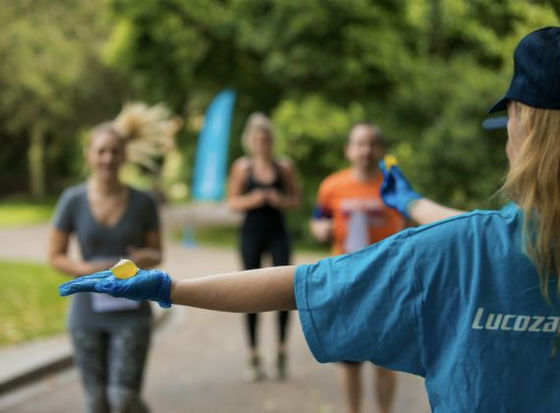Five new technologies to replace disposable plastics such as 'Vegan Spider Silk'

Efforts are being made worldwide to reduce disposable plastics such as plastic shopping bags and PET bottles, and some restaurant chains such as Starbucks have abolished plastic straws. Paper straws are being used instead of plastic straws at Starbucks, but there are many other plastic alternatives available, among which
'Vegan spider silk' and 4 other sustainable alternatives to single-use plastics
https://www.inverse.com/science/sustainable-alternatives-to-single-use-plastics
Plastics are made from fossil fuels that emit greenhouse gases and are therefore a contributor to climate change. Researchers estimate that plastic production and transportation emits 12.5 to 13.5 million tonnes of greenhouse gases annually.
In addition, according to a report by the American Association for the Advancement of Science, a cumulative total of more than 9.1 billion tons of plastic have been produced worldwide since the 1950s, 79% of which was discarded in landfills or the natural environment, and only a few were recycled. It's 9%. According to a study published in March 2021, the total amount of plastic produced in 2015 was 380 million tonnes, which is expected to double by 2050.
As mentioned above, most of the plastics that are discarded on a daily basis are eventually disposed of in landfills. However, it takes about 200 years to decompose plastic in the natural environment. The fact that plastics are not decomposed in the natural environment is also a problem, and in recent years it has been regarded as a problem that plastics flow through rivers and the sea and become minute microplastics that affect marine pollution.
The pollutant 'microplastic' was in the stomach of 73% of fish in the Atlantic and deep sea waters --GIGAZINE

Inverse lists five promising alternatives to plastics that have a significant impact on climate change and environmental pollution.
◆ 1: Vegan Spider Silk

A research group at the University of Cambridge has created a polymer film that mimics the properties of 'spider silk,' one of the most powerful materials in nature. This polymer film is made from vegetable protein and is called 'vegan spider silk' because it imitates spider silk.
Vegan spider silk is not only as strong as existing plastics, it can also be added with a non-fading structural color or with a water resistant coating. In addition, while other bioplastic materials require composting equipment to decompose, vegan spider silk can be made from naturally derived materials without adding chemical products, so it is 100% at home. It can be composted.
Vegan Spider Silk will be commercialized as a replacement for disposable plastics by

◆ 2: Edible plant packaging

Seaweed is a popular sustainable superfood, but it is also expected to be a promising alternative to plastics.
Startup Notpla manufactures 'biodegradable packaging' using seaweed and other plants, which can be biodegradable in about 4-6 weeks. It can also be eaten by humans. Notpla sells beverages and sauces in biodegradable packaging as 'Ooho' and has attracted attention in Japan as 'edible water'.
Scientists have created edible water --YouTube
◆ 3: Next-generation biodegradable plastic
Biodegradable plastics are plastics that can be decomposed with the help of microorganisms. Not all biodegradable plastics are, but some are also compostable, meaning they are made from organic materials rather than chemical fuels.
However, not all biodegradable plastics are fully biodegradable. Many biodegradable plastics are the result of clever marketing, and 'sometimes take decades to completely decompose,' Inverse points out.
One of the most promising biodegradable plastics is the biodegradable plastic, which was developed by scientists at the University of California, Berkeley in April 2021 and can be decomposed only by heat and water.
A new biodegradable plastic that can be composted in just a few days with just water and heat is developed-GIGAZINE

A research team led by Associate Professor Ide Kawamura of the Kawamura Laboratory, who studies biophysical chemistry and structural biochemistry at Yokohama National University Graduate School, devised a method for producing cellulose nanofibers from coffee scraps. An interview with the research team is posted on the following page.
Cellulose nanofibers made from coffee grounds. Circular Innovation from Yokohama National University | Circular Yokohama-Accelerating the Circular Economy in Yokohama
https://circular.yokohama/2020/08/07/y-kokudai-coffee/

◆ 5: Mushroom-derived biomaterial

MycoComposite is used not only as a plastic but also as a cushioning material and case inside the package.

Related Posts:







